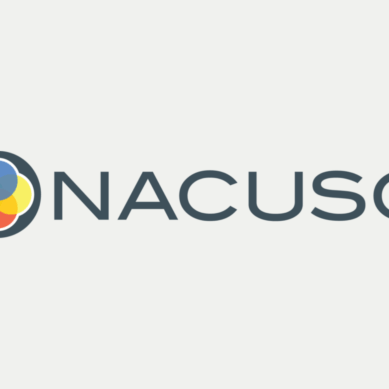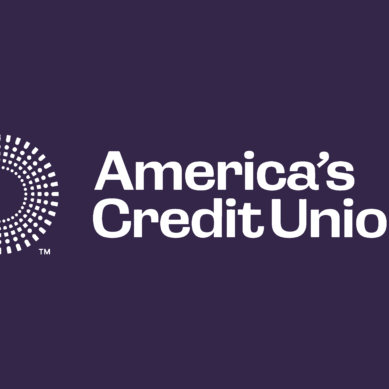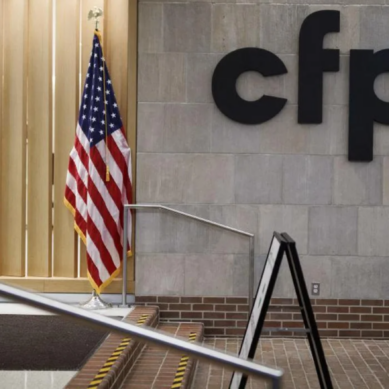Within minutes, a member’s entire financial life was stolen
A 24-year-old credit union member recently fell victim to a devastating fraud scheme. A scammer, posing as a Verizon representative, tricked him into providing access to his phone. Within minutes, the fraudster had transferred the eSIM to another device, effectively stealing the member’s phone digitally.
Once they had control of the phone, they had everything—his brokerage account, fintech accounts, email, social media—everything. He was locked out of it all, completely cut off from his digital life. Worse, when he sought help from the institutions he trusted, he found no one to talk to in person.
He turned to his credit union, where staff worked through the situation as best they could, but the road ahead for him was going to be uphill. Just getting back into Google after an account takeover is hard enough, but securing all his financial accounts? Nearly impossible.
Unfortunately, this scenario is becoming all too common. SIM-swap fraud, account takeovers, and digital identity theft are on the rise, and financial institutions must adapt. This is where credit unions must step up and lead.
By providing fraud education, hands-on fraud recovery assistance, and industry-wide fraud intelligence sharing, credit unions can differentiate themselves from megabanks and fintechs—not just as financial institutions but as trusted partners in financial security.
This article explores the increasing sophistication of fraudsters, the importance of industry- wide collaboration, and how Journey Federal Credit Union (JFCU) is taking proactive steps to protect our members through our newly launched “Journey Forward” model of banking.
The escalating fraud crisis in financial services
Fraud is increasing across all financial institutions, but the past few years have seen a particularly sharp rise in certain types of fraud. One of the most significant threats is check fraud, which surged 400% between 2021 and 2023, costing financial institutions over $688 million.
However, check fraud is only one piece of the puzzle. Other types of fraud that are growing rapidly include:
- Account Takeover (ATO) Fraud: Criminals gain unauthorized access to a member’s account, often through phishing or credential stuffing, and use it to make unauthorized. This is the type of fraud that hit the member discussed earlier.
- Card Skimming and ATM Fraud: Fraudsters install skimming devices on ATMs and Point-of-Sale terminals to steal card information and PINS.
- Loan and Application Fraud: Fraud rings use stolen or synthetic identities to take out loans they never intend to pay.
- Phishing, Spoofing, and Social Engineering: Fake emails, texts, and phone calls trick members into revealing sensitive information, often by impersonating financial institutions. In the situation described earlier, they spoofed Verizon’s phone number to complete the ATO fraud.
Fraud is no longer limited to isolated bad actors—in many cases, it is part of organized fraud rings that target multiple financial institutions, refining their tactics and exploiting weaknesses wherever they can. This widespread approach makes fraud harder to detect and allows criminals to stay ahead of security measures.
Because fraud rings operate across institutions, information sharing is one of the best defenses. By collaborating and exchanging fraud intelligence, credit unions can spot patterns, track fraudsters, and prevent large-scale losses before more damage is done.
The power of information sharing in fraud prevention
The cooperative nature of credit unions gives them a major advantage in the fight against fraud. By sharing fraud intelligence, credit unions can identify threats faster and prevent more financial losses. The key to effective fraud prevention isn’t just having strong internal controls—it’s about working together as an industry to stop fraud rings before they cause widespread damage. However, privacy laws limit what credit unions can share, making it crucial to understand the legal frameworks available.
One of the most effective tools is Section 314(b) of the USA PATRIOT Act, which allows credit unions to legally share fraud intelligence with other registered institutions. This collaboration helps track fraud patterns, identify fraud rings, and prevent losses. To participate, credit unions must register with FinCEN, verify that their counterparts are also enrolled, and follow confidentiality guidelines. While some restrictions apply, 314(b) is a powerful weapon in the fight against fraud.
Even without 314(b) registration, credit unions can still exchange fraud insights while remaining compliant with privacy laws. Industry networks help institutions report fraud attempts and discuss trends, while cooperative groups like CU*Answers’ AuditLink “Conversations on Fraud” facilitate knowledge sharing. Credit unions with similar geographic locations, membership bases, or technology providers can also form fraud task forces to recognize patterns and strengthen defenses.
Fraud is constantly evolving, but by working together and sharing intelligence, credit unions can detect threats faster, protect their members, and stay ahead of bad actors.
A lack of fraud intelligence sharing can be costly. In 2023, a fraud ring exploited multiple credit unions by depositing fake checks through ITMs and withdrawing funds before detection. Because the institutions didn’t communicate quickly, the fraudsters were able to repeat the scheme across multiple locations before being caught.
Had those credit unions shared information sooner, the fraud ring could have been stopped earlier.
Fraud prevention should be a collaborative effort rather than an isolated battle. By investing in intelligence-sharing networks and industry cooperation, credit unions can protect members, limit financial losses, and stay ahead of evolving threats.
Coaching members through fraud recovery
No matter the amount of information sharing and cooperation between credit unions, fraud still happens. Members fall victim to scams, their accounts are compromised, and their financial security is shaken. When that happens, they don’t just need instructions—they need someone who will sit down with them, help them take immediate action, and make them feel like they aren’t alone. Many members turn to their credit union only after struggling to get help elsewhere—through automated phone trees, endless chatbot loops, or customer service reps who can’t offer real solutions.
This is where credit unions must stand apart. Instead of just telling members what to do, employees can take action with them—closing compromised accounts, disputing fraudulent charges, setting up security measures, calling other institutions, and walking them through credit protection. Fraud is more than a financial loss; it’s an emotional experience. The way a credit union responds in that moment can define a member’s trust for life.
That’s exactly why we built the Journey Forward model—to free our teams from the repetitive, transactional tasks that technology can handle so they can focus on what people do best: helping people. By shifting simple deposits and withdrawals to Interactive Teller Machines (ITMs) and self-service banking, we’re ensuring that when members face real financial challenges—like fraud—they aren’t left to figure it out alone. They have someone sitting across from them, guiding them through it.
Journey forward: The next step in banking
Most financial institutions still rely on tellers for routine transactions, leaving little room for meaningful member support. At JFCU, we’ve reimagined this approach through our Journey Forward model—shifting everyday transactions to self-service options like Interactive Teller Machines (ITMs) so that staff can focus on guiding members through critical financial situations, including fraud prevention and recovery.
Instead of interacting with traditional tellers, members are welcomed by Navigators—highly trained, certified financial counselors and financial professionals who serve as advisors, problem-solvers, and fraud prevention specialists. But, their role goes far beyond fraud recovery. Navigators guide members through every stage of their financial journey, from opening accounts and setting up digital wallets to helping them establish transfer channels,
manage payments, create budgets, and repair credit. More than just financial guides, they build meaningful relationships with members, offering personalized support that goes beyond transactions.
Fraud is more than just a financial issue—it’s an emotional crisis. Victims often feel helpless and abandoned, especially when dealing with automated call centers and chatbot loops at other institutions. When financial uncertainty strikes, members don’t need another machine— they need a trusted expert who listens, understands, and takes action. That’s what Navigators provide: real human support when it matters most, ensuring that whether a member is facing fraud, rebuilding their credit, or simply looking for financial guidance, they have someone by their side..
That’s why Navigators play a critical role in fraud prevention and recovery by:
- Educating members before fraud happens: Fraud prevention starts with Navigators proactively teaching members how to recognize scams, avoid phishing attempts, and secure their accounts and cards, helping them become fraud-resistant before they become targets.
- Providing real-time fraud support: When fraud does occur, members aren’t left to figure it out. Navigators take immediate action alongside them—disputing unauthorized transactions, resetting credentials, and securing compromised accounts.
- Coaching members through long-term fraud recovery: Fraudsters don’t just steal money; they disrupt Navigators’ work with victims to rebuild financial security, set up alerts, strengthen passwords, and restore trust in digital banking.
Through Journey Forward, JFCU isn’t just helping members recover from fraud—we’re empowering them to prevent it.
Fraud recovery needs a human touch
Fraud isn’t just an industry challenge—it’s a direct attack on the financial security of the communities credit unions serve. Members turn to us not just for accounts and loans, but for trust, protection, and guidance when things go wrong. Every fraud case is an opportunity to demonstrate why credit unions matter.
When a member sits across from a trained Navigator who walks them through fraud recovery with clarity and care, that moment of support becomes unforgettable. It turns a scared, frustrated member into a credit union advocate for life—someone who tells their family and friends, “When no one else could help me, my credit union did.”
By staying informed, training staff to provide real fraud recovery support, and working together to share fraud intelligence, credit unions can lead the charge against financial crime while reinforcing lifelong member trust and loyalty.
The fight against fraud is a fight for the future of credit unions. By working together, leveraging technology to eliminate rote tasks, and doubling down on what makes credit unions different—human connection, trust, and service—credit unions will remain the safest, most trusted place for members to bank, no matter what threats emerge.
























































